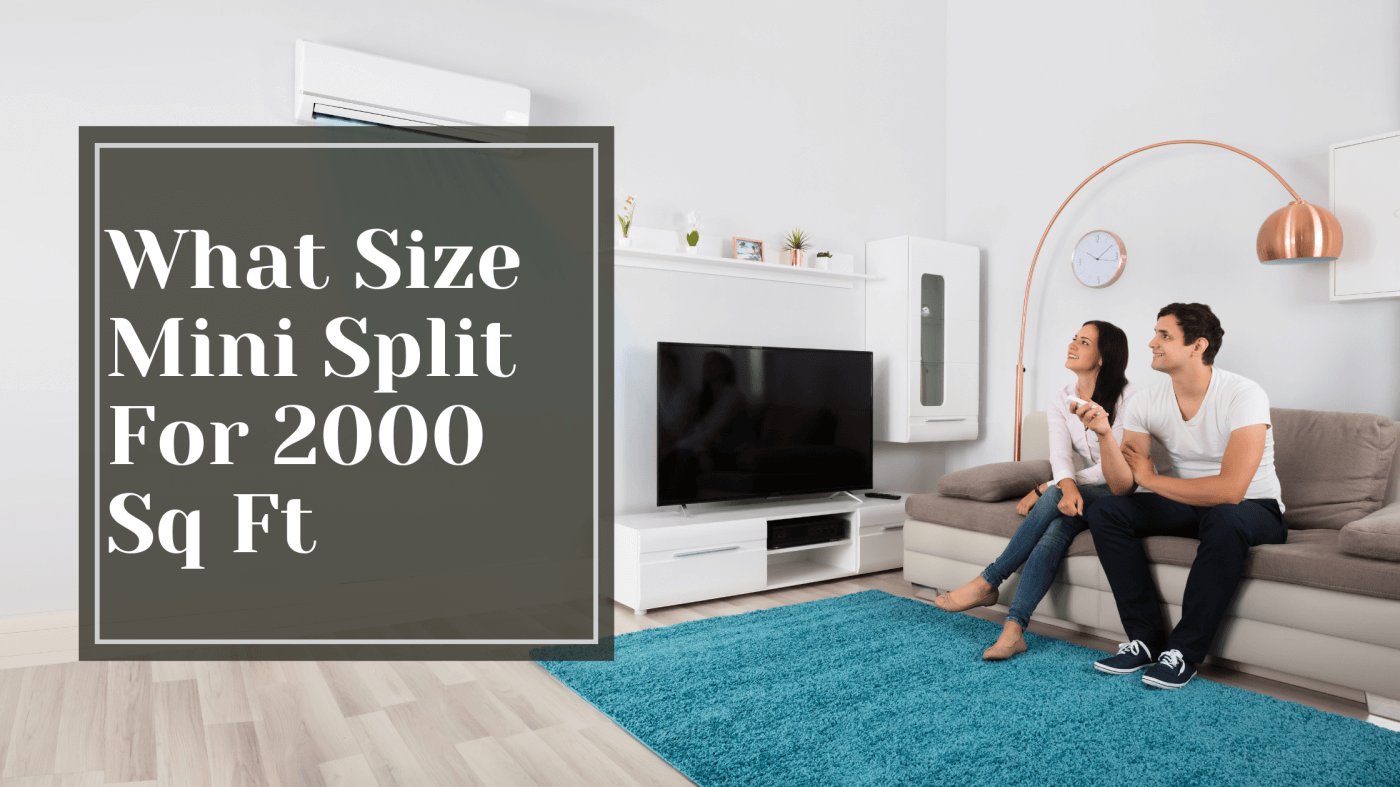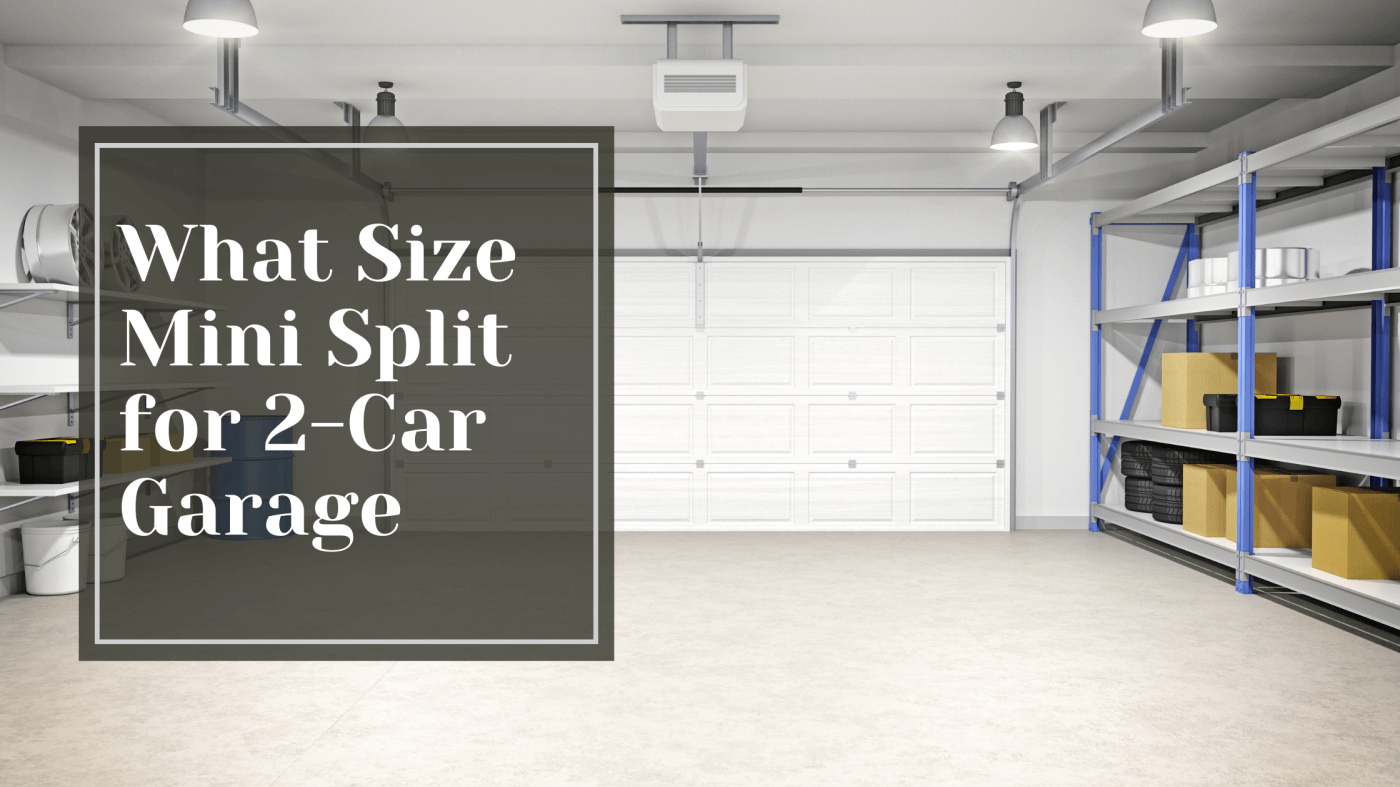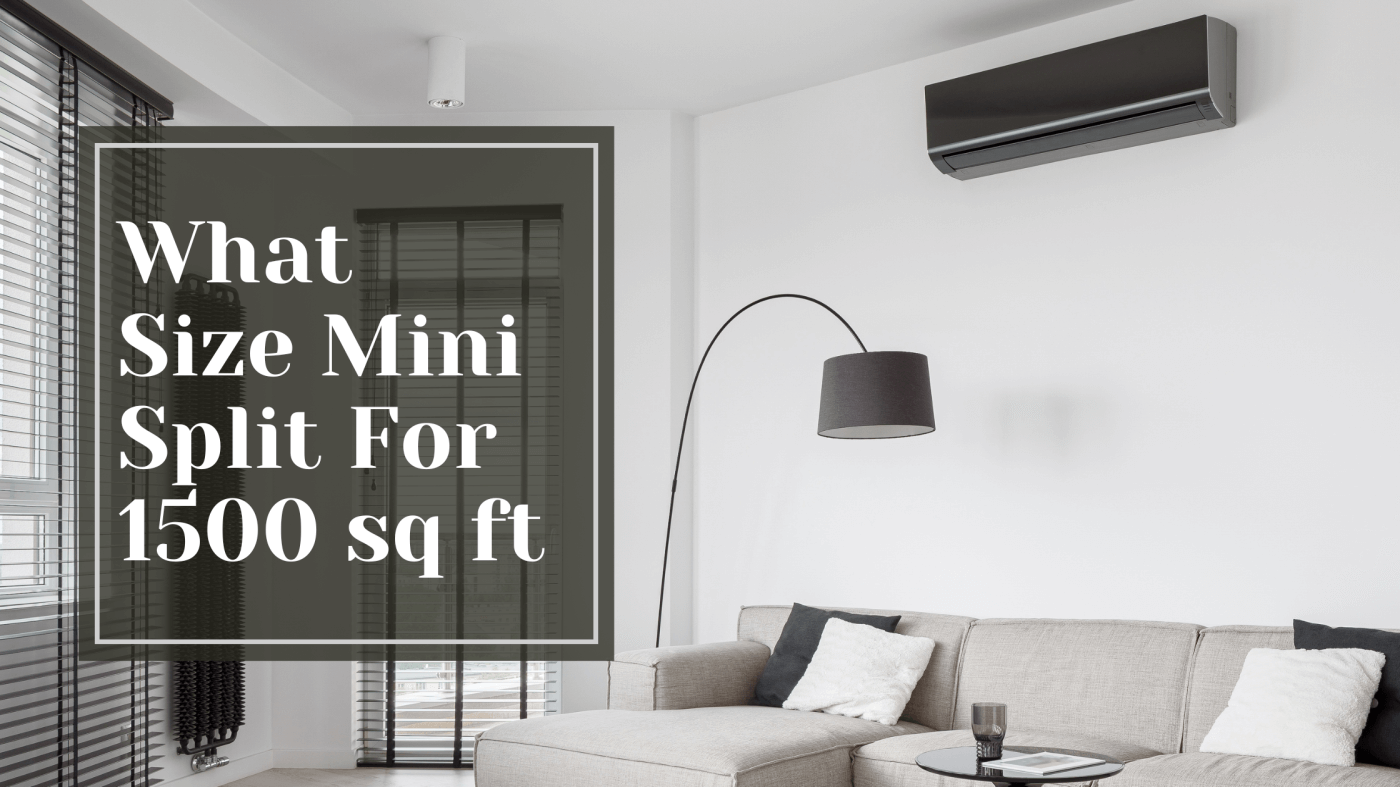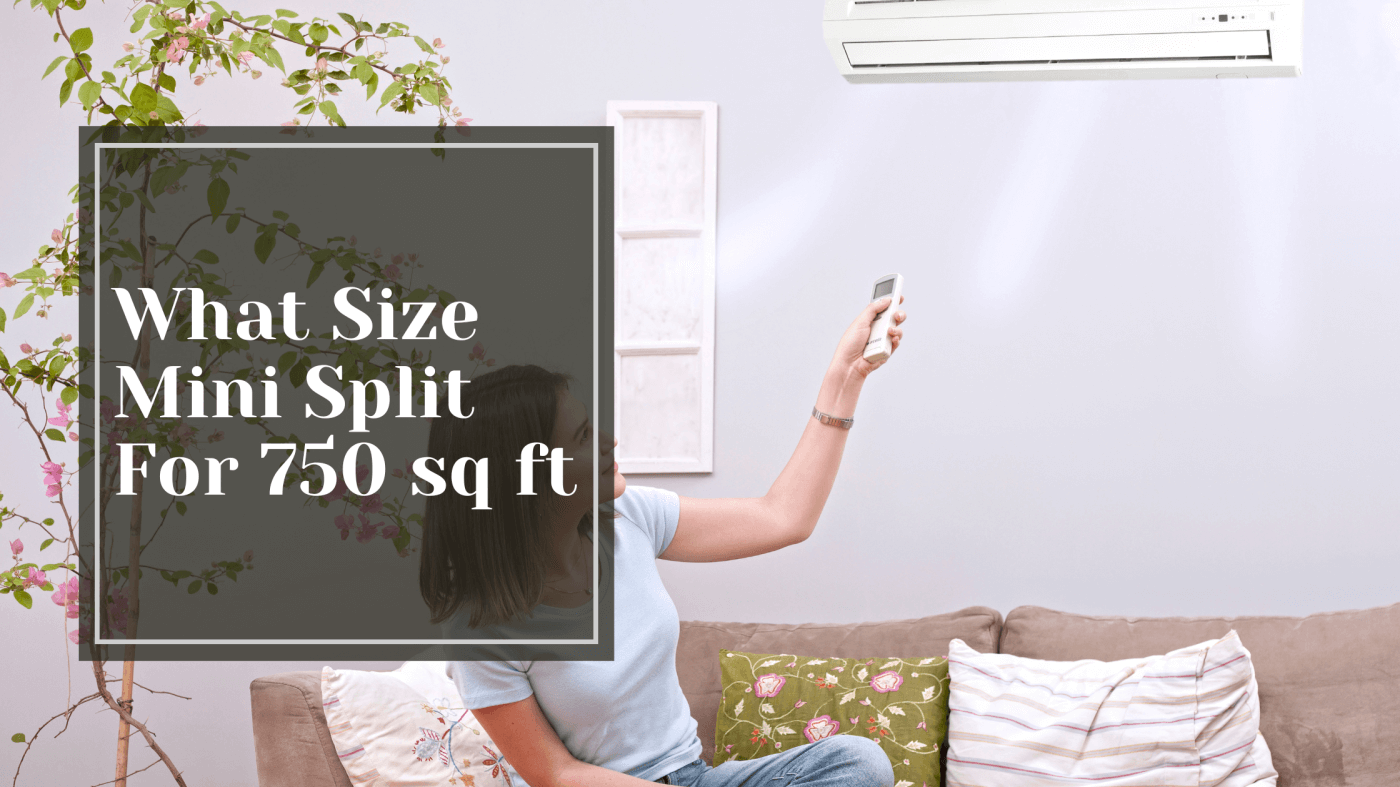You've decided to invest wisely in a a new mini-split system for your 2000 Sq Ft home. However, determining the proper size unit for maximum comfort and efficiency in a space of that size requires careful calculations. Let The Trade Table walk you through the perfect-sized mini split for 2000 Sq Ft.
GREE Livo Gen4 36K BTU 20 SEER2 Wall Mount Mini-Split Single Zone Heat Pump - 4LIV36HP230V1A

$2,844.96
GREE Livo Gen4 36K BTU 20 SEER2 Wall Mount Mini-Split Single Zone Heat Pump The 4LIV36HP230V1AH / 4LIV36HP230V1AO single-zone system is one of Gree’s new 3rd generation of Livo mini splits designed to provide a convenient, efficient method to cool… read more
How Much Cooling Capacity Do I Need for a 2000 Sq Ft home?
You need a small split system with adequate BTU capacity to effectively cool a 2000-square-foot home. You will typically want 20 to 30 BTU per square foot for cooling. If you want to quickly calculate how many BTUs you need, use our mini-split sizing calculator.
Cooling Capacity
- In addition to efficiency, you need ample cooling capacity for a space of this size. For the total of your 2,000-square-foot home, consider a unit with 30,000 to 36,000 BTU or more. Oversizing the capacity slightly is better than under sizing for effective cooling and comfort.
Zoning Options
- A multi-zone mini-split system is a good option for a large home, allowing you to independently control the temperature in each zone or area. A tri-zone system with 36,000 BTU units can cover 2000 square feet, while a quad-zone system provides even more flexibility and comfort.
Cooling Zones
- The number of cooling zones you need depends on the layout and size of your home. A single-zone system may be sufficient for an open-concept house, while a multi-zone system is better for a larger home with separated living areas. Multi-zone systems allow you to control the temperature in each zone independently for maximum comfort.
SEER Rating
- The SEER or Seasonal Energy Efficiency Ratio rating indicates how efficiently the unit can cool your home. The higher the SEER, the more energy-efficient the system is. For a 2000 Sq Ft space, choose a team with a SEER of at least 15 to significantly lower your utility bills. SEER ratings of 19 or more can maximize efficiency and savings.
Installation Considerations
- The installation of a mini-split system requires careful planning. The location of the outdoor condenser unit and the indoor air handlers will determine how well it can cool your entire home. Place the condenser in an area with plenty of airflow and the air handlers in the center or largest room of each zone. An HVAC professional can properly assess your home's layout and requirements to install the mini-split system for optimal performance and energy efficiency.
$3,929.54
Buck Cool Mini-Split EZ Connect 36K BTU Complete Installation Kit The Buck Cool Mini-Split EZ Connect Complete Kits are designed to offer a simple solution for your heating and cooling needs. The pre-charged EZ Connect line sets allow for a… read moreBuck Cool Mini-Split EZ Connect 36K BTU Complete Installation Kit

$4,869.99
Choosing the Right SEER Rating for Maximum Efficiency
When choosing a mini-split system for a space as large as your 2000-square-foot home, the SEER (Seasonal Energy Efficiency Ratio) rating is an important factor to consider for maximum efficiency and cost savings.
A higher SEER rating means the unit will operate more efficiently, using less energy to provide the same level of cooling. For a space of 2000 square feet or more, look for a mini split with a SEER of at least 15 to significantly lower your utility bills. SEER ratings of 16 or above are ideal for maximum efficiency.
The higher the SEER rating, the more you can save on operating costs over time. For example, a system with a SEER 15 rating can save up to 25% on cooling costs compared to a SEER 10 unit. A SEER 16-rated system can save up to 30% compared to SEER 10.
GREE Livo Gen4 36K BTU 20 SEER2 Wall Mount Mini-Split Single Zone Heat Pump - 4LIV36HP230V1A

$2,844.96
GREE Livo Gen4 36K BTU 20 SEER2 Wall Mount Mini-Split Single Zone Heat Pump The 4LIV36HP230V1AH / 4LIV36HP230V1AO single-zone system is one of Gree’s new 3rd generation of Livo mini splits designed to provide a convenient, efficient method to cool… read more
Single Zone or Multi-Zone: Which Is Better for a 2000 Sq Ft home?
When determining whether a single-zone or multi-zone mini split is better for a 2000 Sq Ft home, there are a few factors to consider:
Heating and Cooling Needs
- For a space of this size, a multi-zone system may be better suited to effectively heat and cool the entire area. A single outdoor unit can connect to up to five indoor units, allowing you to place units in separate zones of the building. This ensures all spaces are comfortably heated and cooled according to your needs. With a single zone unit, the temperature in some areas may be too warm or too cold.
Energy Efficiency
- Multi-zone mini splits are often more energy efficient for larger spaces. The multiple indoor units allow for more targeted temperature control so you are only heating and cooling areas that are occupied. The single outdoor unit can also operate at a higher efficiency by distributing the workload across zones. This can result in lower utility bills compared to running multiple single-zone units.
Installation Considerations
- A multi-zone mini-split installation requires more advanced knowledge and skill to set up properly than a single-zone unit. The refrigerant lines need to be correctly run from the outdoor unit to each of the indoor units. The drain lines also need to be properly sloped. More indoor units also mean more wall penetrations that need to be sealed to maximize efficiency. If your space has an intricate layout or certain zones are difficult to access, a multi-zone installation may prove challenging. In some cases, multiple single-zone units could potentially be an easier option.
So, What Size Mini Split For 2000 Sq Ft
In summary, for heating and cooling a 2000 Sq Ft home, a 36,000 BTU mini-split system should work well for most spaces. Doing your homework on the specifics of your home's layout, insulation, and local climate will ensure you choose an appropriately sized unit to maximize efficiency and comfort. While the upfront cost of a mini-split system may be higher than a traditional HVAC, the long-term energy savings and zoned temperature control can make mini-splits a worthwhile investment for your home. With some research and professional guidance, you can find an energy-efficient solution to achieve whole-home comfort.
Table of Contents: What Size Mini Split For 2000 Sq Ft




